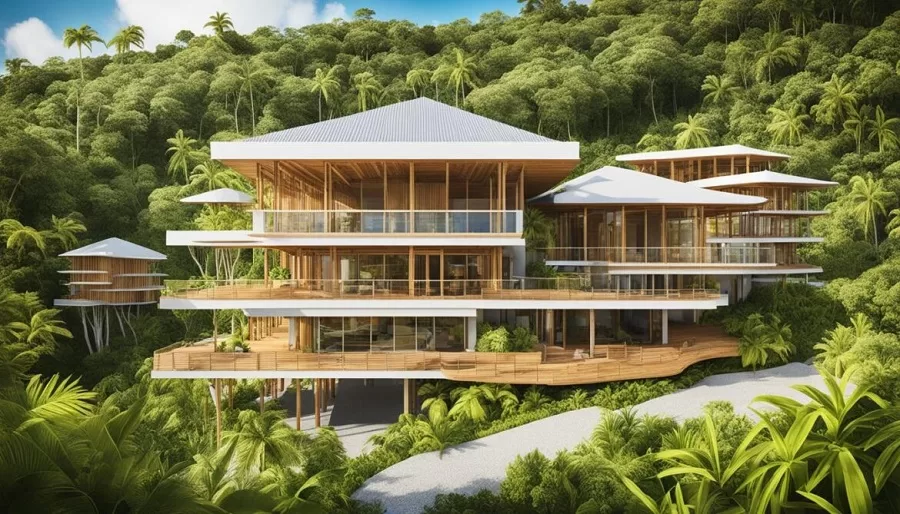Real Estate
Reviving Tradition: Climate-Resilient Homes Built with Upcycled Materials in Trinidad

- Incorporation of traditional practices along with upcycling materials involves constructing houses that are adequate and related to the climate in Trinidad.
- These times are, of course, an issue that is borne by the increasing environmental considerations for modern construction in Trinidad: deforestation and increased land slippage.
- It combines historical Caribbean architecture with innovative uses of repurposed materials for sustainable building practices promoted by Wa Samaki Ecosystems.
Innovative developments are reshaping the residential neighbourhoods on the island of Trinidad. Currently, the focus is on building homes that are more resilient to the changing climates and are built from materials that have been repurposed, alternative building methods that are eco-friendly, and sustainable in the traditional concept of construction.
Trinidad’s Sustainable Residential Revolution
The new architecture of homes will involve turning away landfill waste materials that other homes would have contained. Materials from anywhere nearby—local clay, tropical hardwoods, and many others—have been combined to cleverly retrofit the building that has been made use of. Such uses of materials in the building processes also contribute to a beautiful as well as sturdy structure in buildings: recycled glass bottles that sparkle under the sun and old tyres that form the foundation of the residential buildings.
Thus revitalising several traditional building skills practices in Trinidad, in old times, community people had used the most available natural resources. Today, this is surfacing as a revival and is applied to reduce waste and improve the climate resilience of buildings. These houses are all aimed at channelling positive trends in terms of being eco-friendly and constructed to withstand any weather changes in Trinidad.
What is Earth Building and Its Benefits?
This earth building associated with this populism is such that building through materials found in the surrounding items of the natural environment makes the buildings contain very low carbon. It goes totally against today’s trend of speed-based construction and low cost.
The natural insulating properties of earth buildings keep the interiors naturally cool during the hot and dry seasons and robust to heavy rains during the wet season. This makes it particularly suitable for the Caribbean climate, which is characterised by temperature extremes and heavy rainfall.
Lesson from the Past
In traditional architecture, the Caribbean was the actual place for the home that would be related to the climate. Houses made of wood would have a shutter and awning for the inclination toward storms and brilliant sunshine. Such designs are rejected today in favour of ultra-modern houses that do not respect local rules of the environment and result in dependence on air conditioning and anything artificial for cooling.
Given the reboot of these traditional models, prospective homes are built to be in harmony with the environment and consequently use natural ventilation and shading to moderate temperature. The porous nature of clay offers good uses in home construction, from thermoregulation to making it a practical material for construction in climate-resilient dwellings.
Upcycled Materials’ Role
Perhaps the best positive part of using upcycled materials in construction is that it decreases waste while offering a unique design feature. Rubber tyres, bottles of glass, and bamboo have new purposes in their new lives—they become parts and decorations of a building; thus, every individual piece becomes distinct and does its part by integrating to save this world from degradation.
Structural quality and beauty are provided by these very waste materials and shifted to the place of valuable construction resources. This view should bring to the practice of treating refuse as an opportunity, rather than a problem to be thrown out in the ordinary trash.
Accepting the Irrevocability of Climate Change
Climate change drastically needs to review the usual way of constructing things: using upcycled materials combined with standard building processes to provide an edifice of not just beauty and uniqueness but also resilience to the volatile weather.
It would connect with the earth at deeper levels by encouraging a certain kind of lifestyle where man contributed back rather than combating nature. The wide scope of adopting a sustainable future provides learning awareness to various construction practices, ensuring that building practices are in harmony with environmental integrity and do not destroy the same.
Finally, Trinidad can further mainstream the use of upcycled materials, especially for building homes that are resilient to climate change. The world’s approach to construction and use of natural resources must rest on attuning development to coexist with nature, as the focus now shifts to that pivotal matter concerning the construction approach and also the harmonious use of the environment. In tune with the times, perhaps such practices were meant to serve as a guide toward green living, which was capable of inspiring such practices nearly the world over.

























































